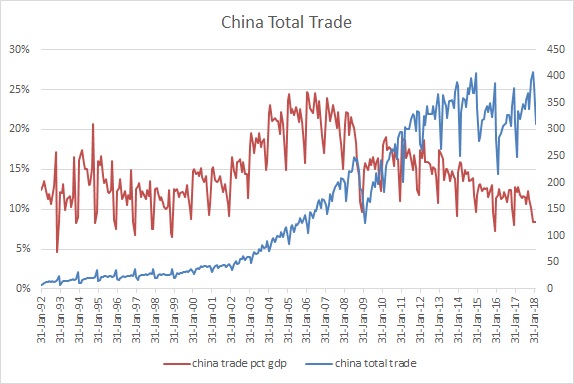One Minute Into The Future: When The Market Turns, Everything Takes A Loss. Well, almost everything.
Equities and expensive and credit spreads are tight. Some investors may be able to eke out further returns, even safely, if they are familiar with certain markets such as the ABS and leveraged finance markets. Eventually, given the weight of capital chasing returns, even these pockets of value get crowded. In the long only world, we are wringing out the last bits of opportunity. What comes next is either a lean period or, hopefully not, a crash.
The hedge fund world has promised for almost half a century, to deliver uncorrelated returns, to make money in rising or falling markets. It has rarely delivered. Most hedge funds will run a long biased strategy. Why would they do this? Because its easy when markets are rising, and markets are more often than not, rising. Also, to be really market neutral and deliver a meaningful returns requires quite a lot of leverage and for some reason investors are leery of that. For a time, so were prime brokers. The result is that most hedge funds are exposed to significant market risk.
Private equity may be immune to downturns by focusing on fundamentals and value creation. However, funding costs are a big part of private equity returns and if the bond markets fall or credit spreads widen, the ability of private equity to leverage itself cheaply will be reduced. Also, by eschewing mark to market, owning private equity in a falling market and recession is like having the blinds down in air turbulence. You can’t see it but you can feel it around you.
Real estate of the physical kind is often a haven asset especially when the tangibility of financial assets is questioned. But real estate is a yield play, a fixed coupon investment, albeit with regular rental revisions. Still it is a very long duration investment a leveraged one and it likes falling or low interest rates.
When markets fall, as they eventually do, almost everything takes a loss. The only way to effectively avoid falling markets is to time them and as anyone who has tried to time them or watched professional investors try to time them will know, this is an exercise in futility. So from a practical perspective, you can’t time markets, your hedge funds will be net long, your niche markets will soon be squeezed dry and the current bull market in everything is getting long in tooth.
What not to do: You don’t go short because a bull market is ageing and valuations are high. Shorting requires a catalyst, a tangible reason. One may soon emerge but for now, the economy is fine and liquidity conditions remain accommodative.
Neither do you switch to cash in scale. USD cash is beginning to yield a fair bit compared to the last decade but it’s still yielding very little. Those little pockets of value in leveraged finance and ABS are still good risks for the yield they generate.
But don’t be greedy. When the mass of investors is greedy, it’s time to go on a diet. Reduce market length, reduce exposure but in a smart way. For example, instead of rotating from IG to HY, it may be more efficient to stay in HY but move up the capital structure. Or to buy assets through structured vehicles which may be cheaper.
Brace yourself. It can seem strange to be bracing for hard times when the general conditions are good but as early signs of market fatigue or economic slowdown appear, it pays to brace oneself. Reducing exposure and buying protection are ways to brace a portfolio. Option protection can get very expensive in the middle of a drawdown but there are ways to construct limited protection without overpaying. Using options adds a dimension of control to a portfolio.
In a rising market, stay long and look for bad things. In a falling market, reduce length, maintain a portion of liquidity, and look for good things.
